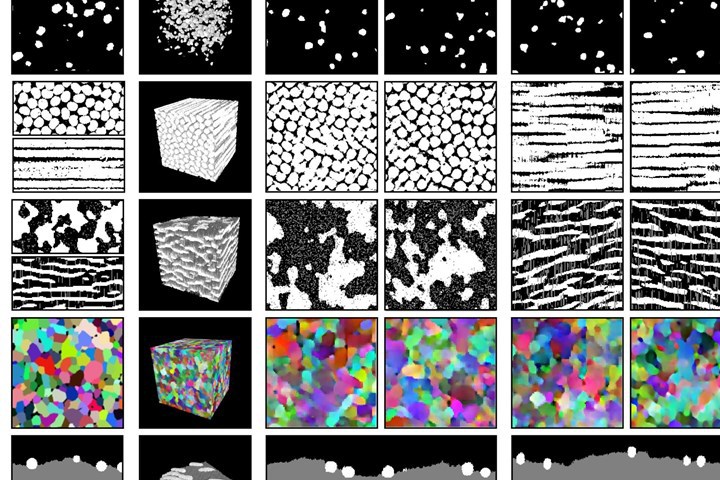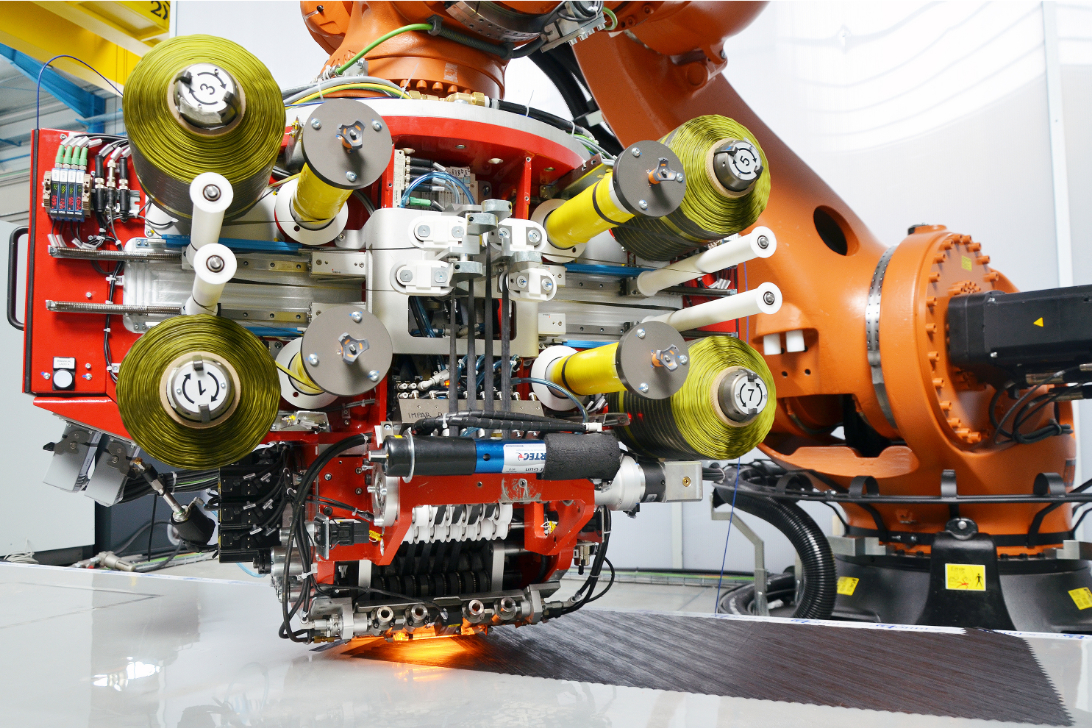Composites Use in Automotive
Composites are used frequently in motorsports and lower volume, high-end/luxury vehicles, which typically favor continuous carbon fiber materials. They are also often used to fabricate exterior structures in racing vehicles, where their relative light weight provides speed and performance advantages over metals. Within mid- and high-volume production vehicles, common composite applications include glass fiber-reinforced polymer (GFRP) leaf springs, suspension components, and drive shafts, sheet molding compound (SMC) body panels and frames; bulk molding compound (BMC) housings and support structures; and injection-molded thermoplastics for bumper frames, lift gates and seat structures.

Latest Automotive Articles
VIEW ALLDash Bespoke highlights SlipStream customer project with TR01 composite chassis
Dash-CAE spin-off’s end-to-end, low-volume performance vehicles, built around the adaptable TR01 platform, help companies de-risk ambitious automotive, motorsport programs.
Read MoreFiberglass-reinforced, injection molded powertrain component wins 2025 SPE Innovation Award
Envalior, General Motors and Schaeffler are recognized for a novel thin-wall actuator gear design enabling electronic throttle control with 30% weight reduction, packaging efficiency and other enhancements.
Read MoreUniphy raises £3 million for smart surface technology
Already trialed by companies like Hyundai, these touch-interactive surfaces offer safer options for dashboard controls in cars, appliances and more, even when used on composite surfaces.
Read MoreAptera Motors initiates validation line for BinC solar electric vehicle
Next step toward scaled, repeatable manufacturing will support everything from materials handling to final fit and finish.
Read MoreKraussMaffei presents automotive-focused BrightStar electric press
Fully electric press offers precise temperature control and fast mold change for press lamination, edge folding applications and even ultrasonic welding of TPC.
Read MoreTwisted acquires carbon fiber specialist KS Composites
The deal marks a major step forward in Twisted’s long-term growth strategy, which is to strengthen its position in the premium automotive and marine sectors.
Read MoreKnowledge Centers

Review the state of the art in design, simulation, failure analysis, digital twins, virtual testing and virtual inspection.
LEARN MORE
In the Automated Composites knowledge center, CGTech brings you vital information about all things automated composites, from the manufacturing processes to the vendors and necessary tools.
LEARN MORE
This CW Tech Days event will explore the technologies, materials, and strategies that can help composites manufacturers become more sustainable.
LEARN MORELatest Automotive News And Updates
Aria Composites Technologies subsidiary launches with focus on composites for transportation
Aria Group’s more than 30 years of composites expertise builds the foundation of this standalone company and its first composite chassis program.
Read MoreCSP launches TCA Float ultra-low density material for automotive body panels
The new sheet molding compound (SMC) material is said to reduce part weight by up to 25% while maintaining mechanical properties and Class A surface finish.
Read MoreShawmut Insights system enables automotive textiles, composites LCA visibility
Shawmut Corp. is helping its automotive partners make smarter material choices through high-resolution environmental data for warp knit headliner composites, laminated fabrics and other textile systems.
Read MoreAZL JPP initiative to benchmark composite rotor sleeve materials, manufacturing
Wet filament, towpreg and laser-assisted tape winding under real-world test conditions aim to identify optimal design and production routes.
Read MoreExxonMobil, Fraunhofer ICT to validate efficient composite vehicle component production via HP-RTM setup
Commissioned HP-RTM dosing unit and mold is operational for Proxxima system-based composite trials at Fraunhofer ICT and available to support industry trials.
Read MoreComposites division of Neos Solutions relaunched as UK Composites
Following a management buyout, the rebranded UK Composites site in Derby, U.K., designs and manufactures carbon fiber composite parts for automotive and other end markets.
Read MoreFeatured Posts
Plant tour: Brembo, Bergamo, Italy
Brake systems pioneer advances both design and industrialized production of customized C/C products that meet the highest performance requirements.
WatchElectromagnetically transparent GFRP rotor for rare earth magnet-free electric motors
A research consortium within the Baden-Württemberg’s ICM research cluster has created a prototype GFRP wireless power transfer electric motor rotor.
Read MorePost Cure: NFPA-rated carbon fiber composite fire truck pump for firefighting, energy industries
Direct engine-driven systems or firetruck applications benefit from the lightweight, compact, high-volume centrifugal pump by KASE Pumping Systems.
Read MoreIndustrializing rapid tape shearing for high-rate, 3D composite structures
ICOMAT’s first RTS factory creates preforms in 5 minutes for parts with -65% weight, higher strength and damage tolerance for wingskins, spars, fuselage, space tanks, auto chassis and more.
Read MoreModular approach to material card development of composites
Forward Engineering GmbH walks through a modular testing and simulation approach for automotive/aviation composites enabling more accurate material selection earlier in the design phase.
Read MoreNational Composites Week 2025: Transportation
Commemorating the theme “Performance With Purpose,” CW has gathered key stories over the last year that exemplify how composites have progressed commercial automotive and mass transit.
Read MoreFAQ: Automotive
How are composites used in automotive structures?
Within mid- and high-volume production vehicles, common composite applications include glass fiber-reinforced polymer (GFRP) leaf springs, suspension components, and drive shafts, sheet molding compound (SMC) body panels and frames; bulk molding compound (BMC) housings and support structures; and injection-molded thermoplastics for bumper frames, lift gates and seat structures.
As electric vehicles (EV) become more prevalent on the road and in development by automotive manufacturers, new opportunities exist for composites and composite materials development. For example, a lighter-weight, composites-intensive vehicle is likely capable of driving for a longer range between charges. Battery enclosures present one large market opportunity in the EV market.
Why use composites for electric vehicle (EV) battery enclosures?
As the automotive industry rapidly electrifies its fleets, interest is growing among OEMs and battery module producers in using composite materials for battery enclosures — covers and trays that hold and protect the frames and battery cells themselves.
There are many reasons for this, including the ability to reduce mass and stack tolerances, the fact that battery enclosures are multicomponent assemblies and poor impact performance of metals. In each of these areas, composite battery enclosures offer quantifiable benefits versus metals: lower mass, higher design freedom with greater space efficiency, faster assembly, no corrosion, greater durability and — with specific formulations — better flame resistance/fire containment.
Source: Price, performance, protection: EV battery enclosures, Part 1


























